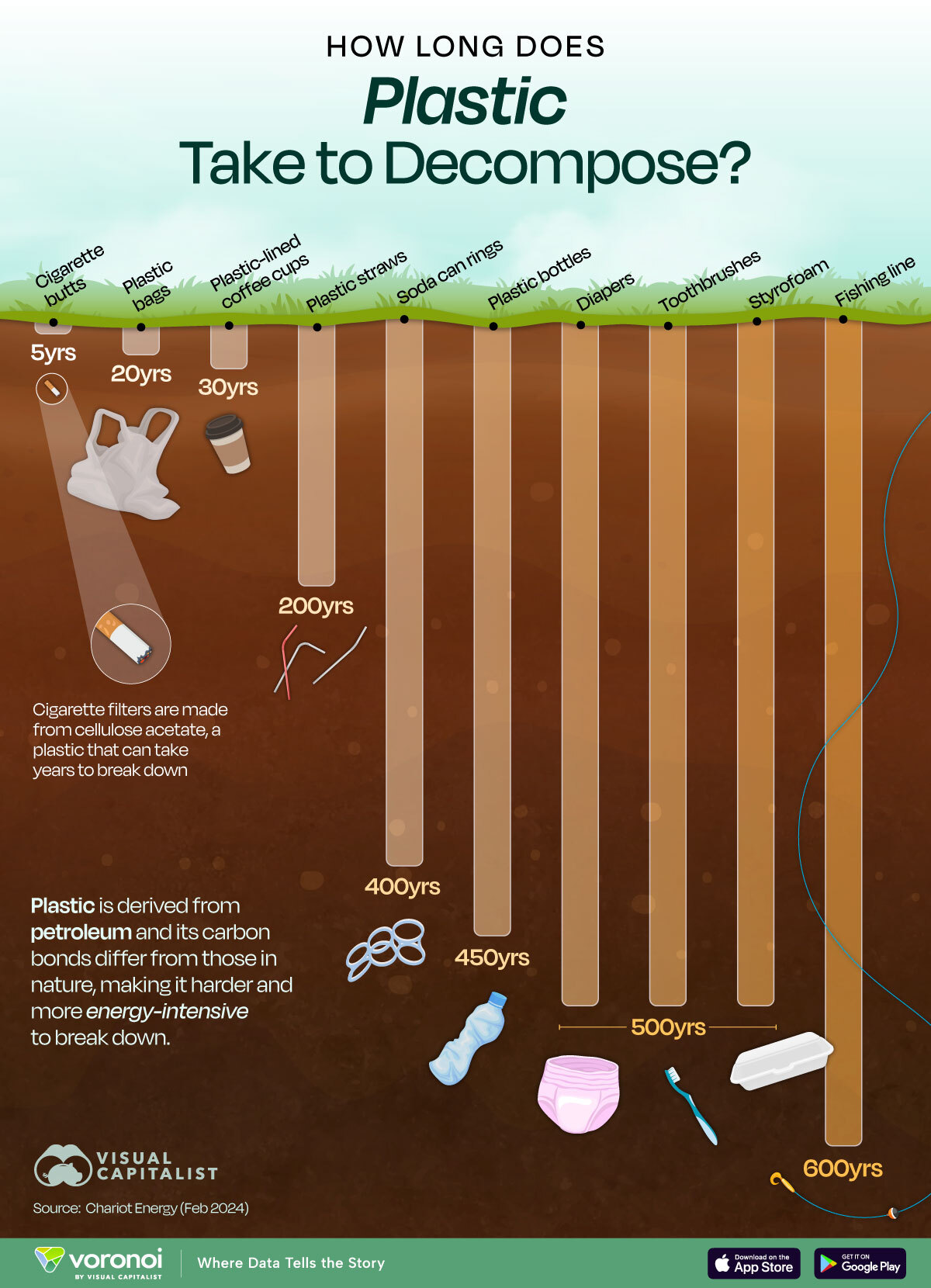![]()
See this visualization first on the Voronoi app.

Use This Visualization
Infographic: How Long Does Plastic Take to Decompose?
This was originally posted on our Voronoi app. Download the app for free on iOS or Android and discover incredible data-driven charts from a variety of trusted sources.
Key Takeaways
- Plastics can take 20 to 500 years to decompose, depending on the material and structure
- The breakdown rate of plastic also depends on sunlight exposure (UV radiation)
- Single-use plastic grocery bags take about 20 years to break down
- Plastic water bottles (made of polyethylene terephthalate – PET) take around 450 years to fully break down
Not Natural
Plastic is everywhere—from everyday packaging to essential medical tools. But once discarded, these items don’t just disappear. They linger for decades, centuries even, posing long-term environmental threats. Meanwhile, only 9% of plastic gets recycled globally.
Plastic is derived from petroleum and doesn’t occur in nature. Its carbon bonds differ from those in nature, making it harder and more energy-intensive to break down.
The quickest to break down, cigarette butts, still take five years. Plastic bags follow at 20 years, and plastic-lined coffee cups at 30 years, according to data from Chariot Energy.
| Material | Estimated Decomposition |
|---|---|
| Cigarette butts | 5 years |
| Plastic bags | 20 years |
| Plastic-lined coffee cups | 30 years |
| Plastic straws | 200 years |
| Soda can rings | 400 years |
| Plastic bottles | 450 years |
| Toothbrushes | 500 years |
| Disposable diapers | 500 years |
| Styrofoam | 500 years |
| Fishing line | 600 years |
More durable items last far longer. Plastic straws take 200 years to decompose, soda can rings 400 years, and plastic bottles 450 years. Everyday hygiene items like toothbrushes and diapers take about 500 years—just as long as styrofoam.
At the top of the chart is fishing line, which can persist in the environment for 600 years. This is especially harmful to marine life, often entangling animals or being ingested with fatal consequences.
It’s also important to note that plastic can usually only be recycled once or twice before it degrades and becomes unusable. This means that even recycled plastics will eventually end up in a landfill, be incinerated, or find their way into the ocean.
Learn More on the Voronoi App ![]()
If you enjoyed this post, check out How Much Plastic Waste Actually Gets Recycled Globally? on Voronoi, the new app from Visual Capitalist.